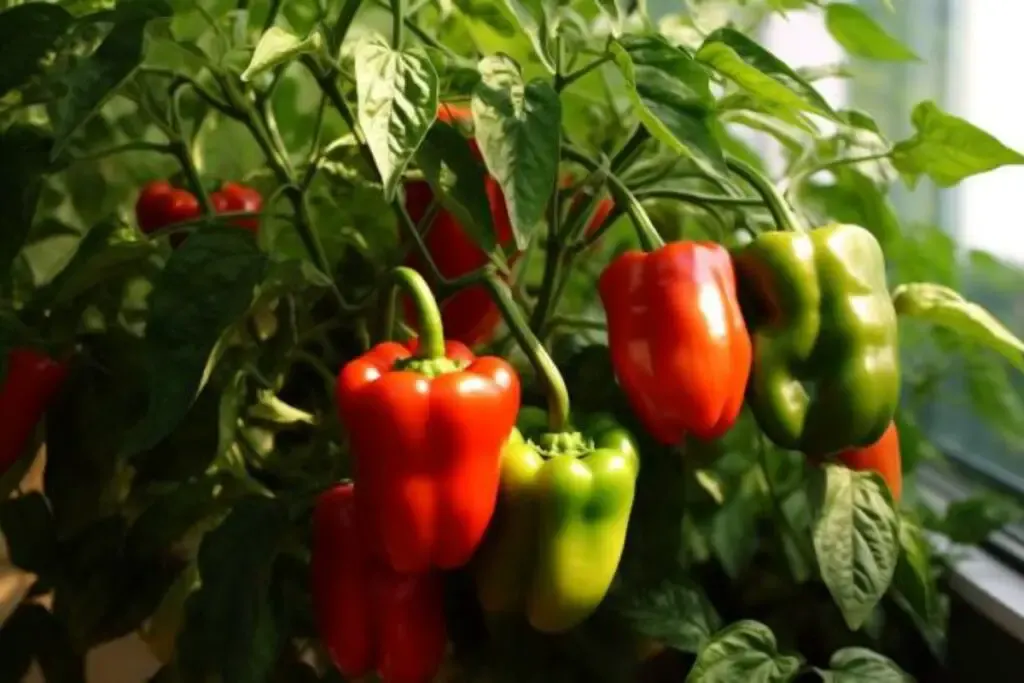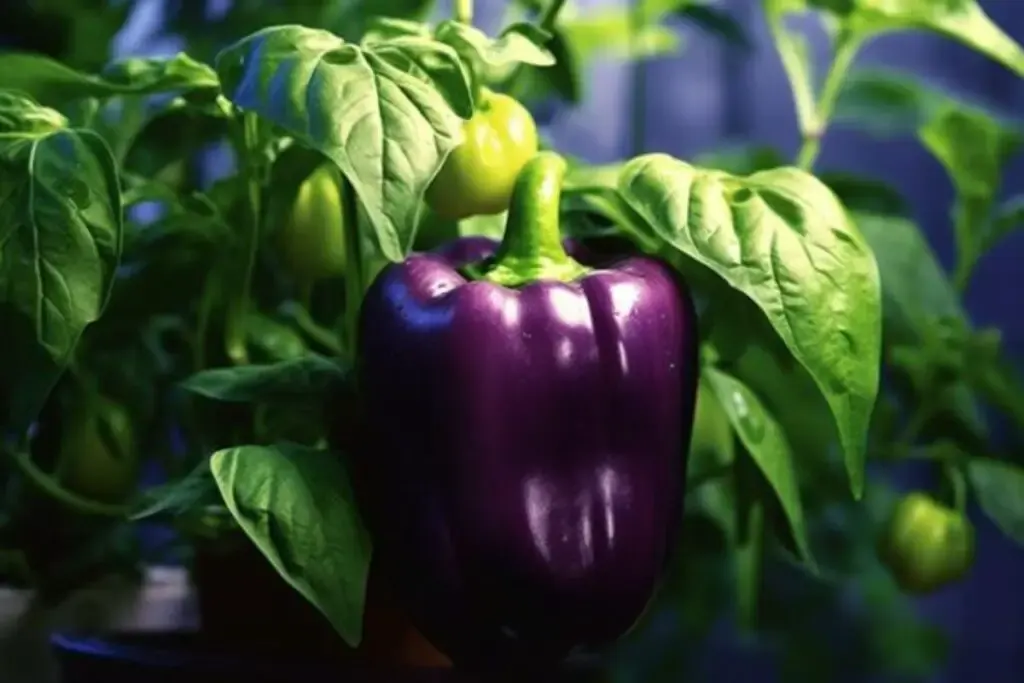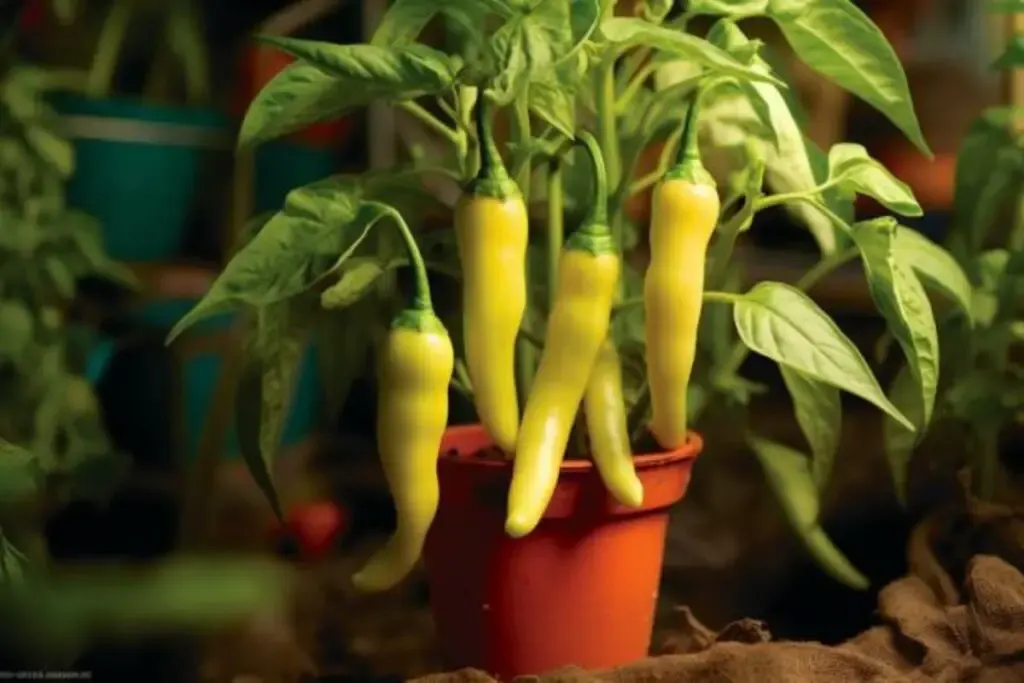Bell peppers are a vibrant and nutritious addition to any home garden, and growing them in pots can be an especially rewarding venture for city dwellers, people with limited space, or those looking to adorn their patios with edible beauty.
As an expert gardening blogger, I’m here to guide you through the process of growing bell peppers in pots, ensuring your balcony or backyard becomes a colorful canvas of lush greenery and brilliant hues.
Do Bell Peppers Grow Well in Pots?
The short answer is a resounding yes! Bell peppers are quite adaptable to container gardening, and with the right conditions, they can flourish and produce a bountiful harvest.
Potted bell peppers allow for greater control over the growing environment, making it easier to manage soil quality, watering, and even the amount of sunlight your plants receive. Plus, pots make it simpler to prevent soil-borne diseases and keep pests at bay.
When growing bell peppers in pots, there are a few key factors to consider: pot size, soil type, watering, and feeding. A pot that is at least 12 inches deep and wide is ideal, as it provides ample room for the roots to grow.
A well-draining, nutrient-rich potting mix will do wonders for your peppers, paired with consistent watering to keep the soil evenly moist but not soggy. Bell peppers are heavy feeders, so a regular feeding schedule with a balanced fertilizer will help keep those peppers coming.
Best Bell Pepper Varieties for Pots
Not all bell peppers are created equal when it comes to container gardening. Some varieties, due to their size and growth habits, are better suited for pots than others.
Let’s take a closer look at a few top picks that are known for thriving in the cozy confines of container life.
1. California Wonder

The California Wonder is the classic, quintessential bell pepper that many gardeners swear by. It’s a reliable variety that produces generously sized, blocky peppers with a crisp texture and a sweet flavor.
These sturdy plants are ideal for pots, as they don’t grow too tall, yet provide a good yield. I’ve always enjoyed the versatility of California Wonder – it’s as delightful in a fresh salad as it is stuffed and baked.
2. Purple Beauty

If you’re looking to add a splash of color to your potted garden, Purple Beauty is your go-to. These compact plants offer a striking visual with their deep purple fruits, which are not only beautiful but also packed with flavor.
In my experience, these peppers are always a conversation starter due to their unique color, which transitions to a rich red when fully ripe.
3. Sweet Banana

Sweet Banana peppers bring a different shape and flavor profile to your pepper collection. These long, banana-shaped peppers have a mild, sweet taste and are perfect for quick snacks, salads, or sautéing.
In a pot, Sweet Banana peppers tend to be prolific, so you can expect a steady supply throughout the growing season.
How to Grow and Care For Bell Peppers in Pots
Growing bell peppers in pots is an engaging and productive project for any gardener. With a little know-how and attention to their specific needs, you can nurture these plants to produce a hearty crop of peppers.
Let’s break down the steps and care requirements.
Planting
Timing is crucial when planting bell peppers. Begin by starting seeds indoors 8-10 weeks before the last expected frost. Peppers need a good head start since they grow slowly at the beginning.
Plant the seeds about a quarter of an inch deep in a seed-starting mix, and keep the soil warm to ensure germination. Once the seedlings develop their second set of true leaves and outdoor temperatures consistently stay above 60°F, they’re ready to be transplanted into pots.
Pot Size
Bell peppers need room to grow, and the size of the pot can make or break your success. I recommend using at least a 12-inch pot for each bell pepper plant.
This size offers adequate space for the roots to spread out and access the nutrients they need. Larger pots also retain moisture longer, which means you’ll be watering less frequently – a plus during the hot summer months!
Light
Bell peppers are sun worshippers and need plenty of light to flourish. Aim for at least 6-8 hours of direct sunlight each day. In my own potted pepper garden, I’ve found that the more sun these plants get, the better they produce.
If you’re in a particularly hot area, though, be mindful of the intense afternoon sun which can sometimes be too much. In these cases, a bit of shade during the hottest part of the day can help prevent the plants from getting stressed.
Soil
The soil you choose for your bell peppers is a critical factor in their growth. They thrive in a well-draining, nutrient-rich potting mix. I like to use a mix that includes compost or well-rotted manure, which provides extra nutrients.
Bell peppers prefer a slightly acidic to neutral pH (6.0-6.8). It’s always a good idea to check the pH of your soil and adjust accordingly, ensuring your peppers have the ideal environment for optimal growth.
Water
Watering your bell peppers correctly is vital for their development. They prefer consistent moisture, so aim to keep the soil evenly moist but not waterlogged. Over-watering can lead to root rot while under-watering can stress the plant and reduce yield.
I usually check the soil moisture by sticking my finger an inch into the soil. If it feels dry at that depth, it’s time to water. Also, ensure your pots have good drainage to help manage soil moisture levels.
Temperature and Humidity
These warm-season crops enjoy the same temperatures most people do, between 70°F and 85°F. Nighttime temperatures shouldn’t drop below 60°F, so early in the season, be prepared to bring pots indoors or cover them if a chilly night is forecasted. As for humidity, bell peppers aren’t too fussy, but they don’t like to be too dry. If your climate is arid, occasional misting can help.
Fertilizer
Bell peppers are heavy feeders and will benefit from regular fertilization. I recommend starting with a balanced, slow-release fertilizer at the time of planting. As the plants begin to flower and set fruit, switch to a fertilizer higher in phosphorus and potassium to support fruit development.
Be cautious not to over-fertilize, as this can lead to lush foliage at the expense of fruit. Applying a water-soluble fertilizer every two weeks or so can be a good strategy to keep your bell peppers happy and productive.
Pruning Potted Bell Peppers
Pruning might not be the first thing that comes to mind when growing bell peppers, but it’s a practice that can greatly enhance your plant’s health and yield. To start, you’ll want to remove any early blossoms that appear on your pepper plants. This might seem counterintuitive, but it encourages the plants to put more energy into growing strong and sturdy before they start setting fruit.
As the plants grow, look for any inward-facing leaves and branches that might block sunlight and airflow to the developing peppers. Carefully snipping these off can reduce the risk of fungal diseases and improve the overall energy efficiency of the plant.
Additionally, if you notice any damaged or diseased stems and leaves, remove them promptly to keep your plant healthy. I like to compare it to giving your plants a bit of a “check-up” now and then.
Lastly, be mindful not to over-prune, as this can stress the plant. Just a little trim here and there is all that’s needed for your bell peppers to flourish in their potted environment.
Overwintering
If you live in a region where winters are cold, you’ll need to think about overwintering your potted bell peppers. These plants are perennial in tropical climates, but they can’t handle frost. The key to overwintering bell peppers is to treat them like houseplants.
Before the temperatures drop, bring your potted peppers indoors to a space with plenty of light and warm temperatures, ideally between 65°F and 75°F. Reduce watering in the winter months but monitor the humidity level to ensure it doesn’t drop too low, which can happen in heated homes.
During the winter, growth will slow down, so there’s no need for fertilizer until the sun grows stronger in the early spring. As the days lengthen and temperatures rise, gradually reintroduce your plants to the outdoors, taking care to avoid any late cold snaps.
Remember, not all pepper plants will survive the winter indoors, but with proper care, some will not only survive but also thrive and produce early in the season. Overwintering is a wonderful way to get a jump start on the growing season and enjoy the rewards of your gardening efforts year after year.

